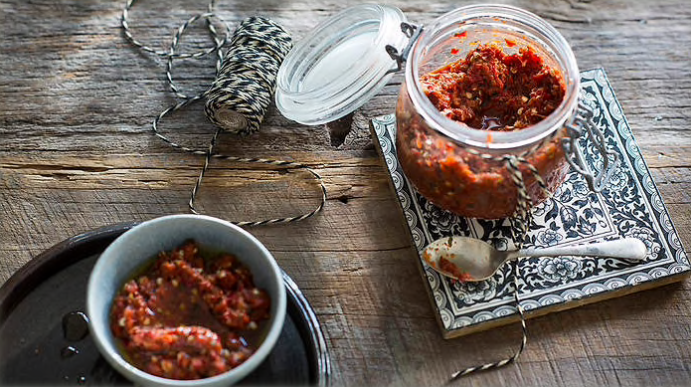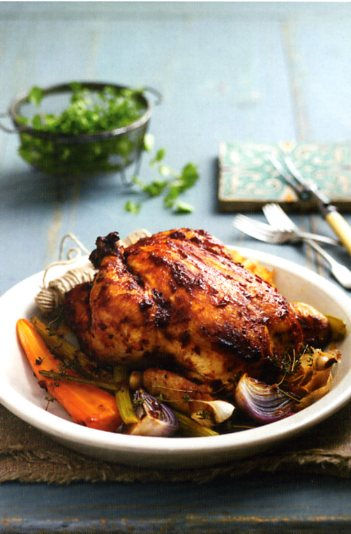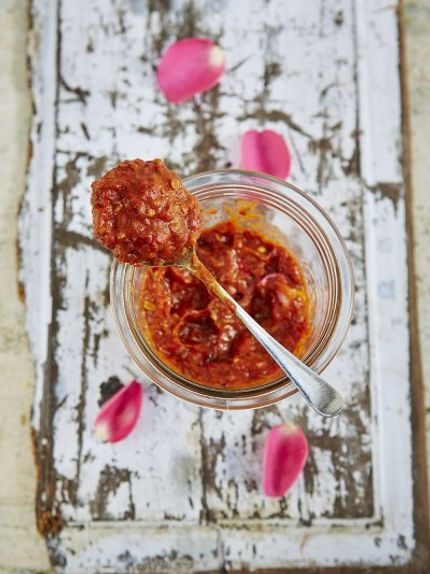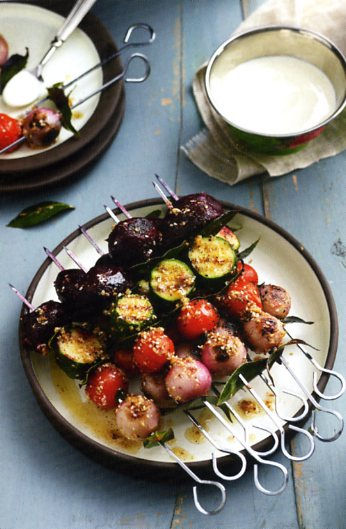Lucky dip - harissa
- rosemarydearman1
- Jan 12, 2020
- 6 min read

Then there's another way that foods travel - by exploration. And the major example of this was, of course, the discovery of the Americas. Where would Italy be now without tomatoes? Ireland without potatoes? Most of Asia, the Middle-East and North Africa without chillies? And lots of other things as well of course - beans and corn for a start. But in this case it's chillies which feature in the Mahgreb countries of Northern Africa, and particularly in the spicy paste - harissa. Tunisia is said to be the home of harissa, but it does feature elsewhere too - like Morocco, which is the to topic of my lucky dip book The Australian Women's Weekly - Moroccan to which I am returning today.

First a few brief words about the book. I probably saw it in the supermarket at a time that I was interested in North African/Middle Eastern food. Moroccan was all the rage - well it still is really - and there was a Women's Weekly version. Now I'm a fan of Women's Weekly cookbooks as they are surprisingly sophisticated and yet simple. Theirs was my best introduction to Thai food and they had an excellent one on tomatoes. So I grabbed this one. And it is good. Some of the recipes are really interesting - particularly in the section on Tagines and it's beautifully illustrated, but I do have one specific criticism which arises out of my lucky dip choice of recipe.

It was Roast Harissa Chicken - shown at right and it does look tempting but basically it's just roast chicken marinaded in harissa. It's really not worth giving you the recipe. Now you would think would you not that the recipe would include the recipe for harissa - or that a recipe for harissa would have been given at the start of the book? But no. Within the cover there are photographs and minimal descriptions of Moroccan essentials - well I guess that's what you would call them. And the back flap has various spices and spice mixtures - which includes harissa. But no recipe. The roast chicken recipe simply tells you to buy some.
Which to a cooking purist is a bit of a disappointment I guess.
Now I have made harissa in the past, but I also looked online to see what Coles and Woolworths have to offer because I had vaguely remembered trying to find some once and only finding a spice mix - a powder from Master Foods, not a paste, which is what harissa really is. Coles is the marginal winner here as they have two imported pastes, and the spice blend, and Woolworths just the one paste and the powder. The one they have in common is called Le Phare du Cap Bon Harissa and it comes from Tunisia - which, as I said, is supposed to be the 'real' home of harissa. I looked up the company and found that it is a small company that just makes harissa and tomato paste in Tunisia. Lots of people on various websites recommended their product. But be warned - it is apparently pretty hot. And best to buy in a tube, which actually is the only way you can buy it at your local supermarket. Doubtless more specialist stores have other brands.
The other Coles product - Zahra is cheaper and from Egypt and a bit less specific about its ingredients.
So should I just use a ready made product? Should I not bother with making my own?
"There are advantages of pinning down a good shop-bought harissa. Commercial varieties provide a great alternative to starting from scratch every time a recipe requires the paste. "I prefer to buy the stuff, it's made so well, I'm not sure why anyone would make it," says Middle Eastern chef, Sabrina Ghayour. "God knows everybody in North Africa does the same." So if you're following a traditional recipe, then perhaps popping out and buying a tube or a jar of harissa really is the best way to guarantee authenticity." Rachel Smith - The Telegraph
Which is indeed an interesting thought is it not? Do the Indians buy Patak's curry pastes or do they make their own? Do the Mexicans by El Paso products? And it's also interesting that, so far, no Australian immigrants seem to have started making their own. Well not quite true - Greg Malouf has a red and a green harissa.
But I'm guessing he doesn't have a lot to do with the making of them. I'm guessing he has merely provided the recipe and somebody else makes it. Well I may be a bit wrong. He does have a company Malouf's Mezza which not only produces a range of spices but also consults and designs restaurants. So maybe he does have a more personal hand in it than I thought. Not so close as those immigrant stories I have been talking about of late though. Just a celebrity chef with a business arm.
I digress - but you can find recipes from him that you can make yourself for Green Harissa, Red Harissa 1 and Red Harissa 2. There are two recipes for red harissa here because they seem to vary a bit.
Indeed the recipes you find seem to vary a good deal. The most common version is the one offered by Claudia Roden reproduced on the Mustard and Marmalade website, in which the ingredients are chillies, garlic, coriander, caraway and salt - the same as in that Le Phare du Cap Bon product. Cumin is the other ingredient that sometimes pops up, but really there is quite a large range of choice if you want to make your own. Here are three:

Lovely tomato and rose petal harissa from Jamie Oliver, shown at left. Now I did make this one once using rose petals from my own garden. But really you would need to have your own rose petals which you were sure had not been sprayed with anything before you attempt this one. Then, of course Yotam Ottolenghi has a go. He includes sherry vinegar and preserved lemons in his and lots and lots of chilli. Then there's the one pictured at the top of the page which comes from Hassan M'Souli on the SBS website.
I also checked out my bookshelves, and found that Robert Carrier in his book on Morocco had two versions, the second was milder - adding red capsicum and toning down the chilli. No caraway or vinegar for him though - just cumin and coriander and garlic. And lastly there is Machael Rantissi's version from Falafel for Breakfast of which he says:
"This one makes a more vinegary style of harissa than the more traditional paste, but you can vary it by adding less oil and vinegar, and more chilli. I like to use this harissa as a dressing rather than cooking with it." Michael Rantissi
You can find the recipe here. But to contradict what he says about not cooking with it, his book has three different recipes which do indeed use it. The lamb one is on the website with the harissa recipe.
So a little confusing and somewhat disappointing that the Women's Weekly did not include a recipe for that or any of the other spice mixes it mentions as essential either. You would have thought it an obvious thing to do. After all their Thai cookbook, for example has recipes for Thai curry pastes. I also have a much smaller booklet on Moroccan food, produced by another women's magazine - Family Circle which actually does have a recipe - more or less the standard one, but without the caraway.

The recipe on the opposite page of my lucky dip book - for vegetable brochettes, was also not really very enticing and very simple - to bland really. Maybe times have changed and this book just reflects that. When the Thai cookbook was published there was not the huge range of Thai curry pastes available in your local supermarket now. Now that you can get these things easily maybe there is no need to tell us how to make them. We're all too busy, and if you can get an 'authentic' Tunisian harissa at Coles, then why bother to make your own? Well:
"There’s a huge range of ready-made harissas, but homemade is even more delicious, and satisfying, too; it means you get to control its heat levels." Yotam Ottolenghi
True, but I guess if you have a chilli averse husband like me and therefore you tone the chilli right down, then it's no longer harissa is it? The chillies are the point really.




















Comments